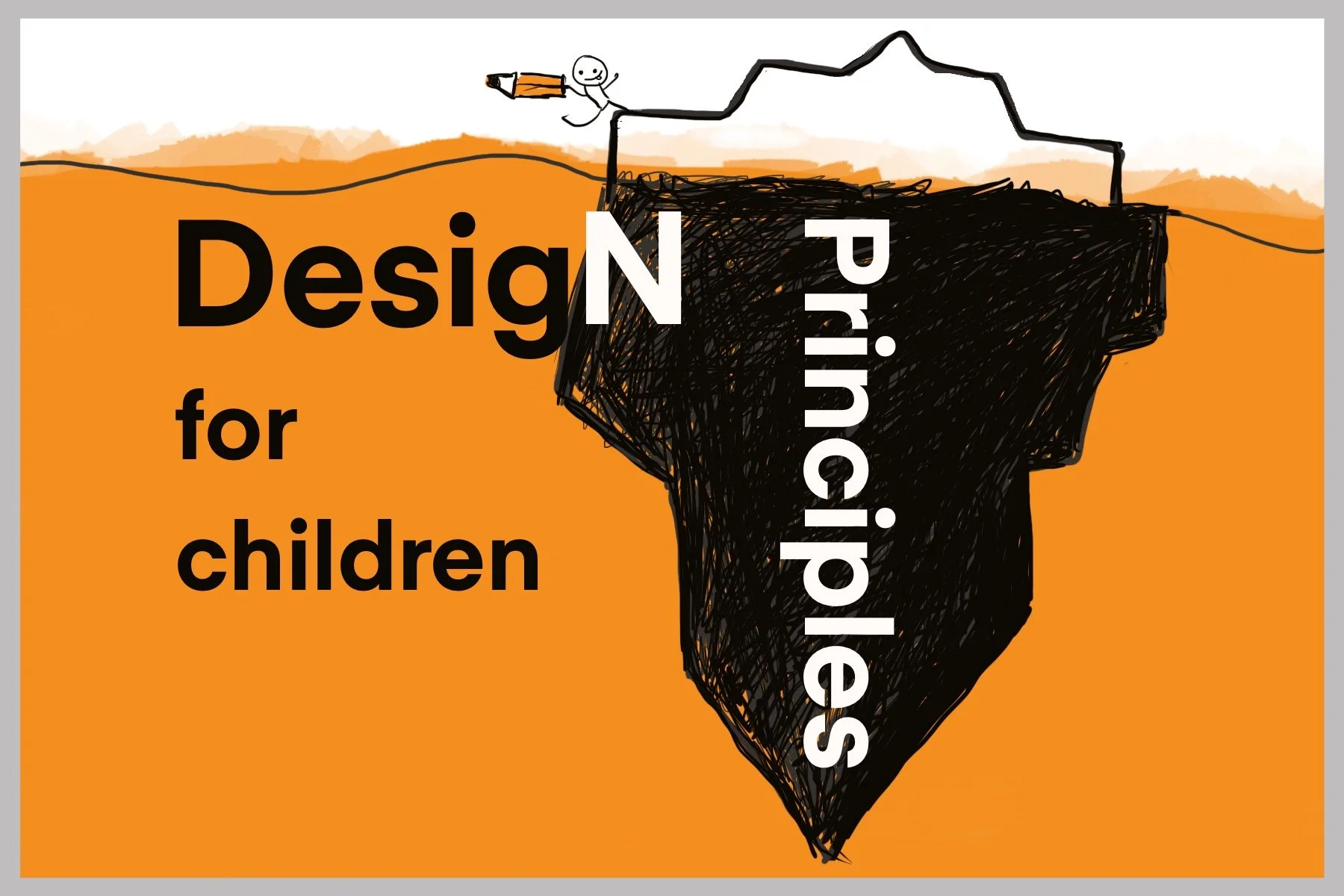Learning Design Principles for Children
As a researcher, a UX designer, a parent and a learning enthusiast, I have a strong intuition about what a child needs for natural development. Every day I am sculpting it with reading, conversations and actions. I am passionately breathing in and writing out everything that can help develop solutions that will spark children’s joy and ignite their natural inclination toward learning. Below is a list of what I believe are essential principles of learning products that fan the flame.
ChildrenLX’s principles are:
Ignite the fire of learning - The spark that lights the fire of curiosity is magic. What can we do to inspire learning and kindle passion that expands beyond our product? Think back to a moment when you were so interested in something new that it took over your life. But even amid the fervor, passion and interest need to be cared for gently to keep it from burning out. Learning products are intended to fuel the learning journey in the long run – the one owned by the child.
Focus on the child’s journey - Learning is an experience; thus, the focus should be on the process, not the product. Serve the child’s journey. Look at the wider context. The borders – between learning and entertainment, between your digital product and the child’s digital and physical environment – have been created by adults and product designers to categorize our world. From a child’s perspective, these and other borders are imperceptible. By embracing the discomfort of uncertainty, we’re able to be honest, flexible and bold in adjusting to children’s needs along their learning journeys.
Create humane tech solutions for children - “Our technology is having a more and more profound impact on our minds, and that impact is accelerating far faster than our ability to understand it.” (Center for Humane Technology) Humane designers create products that respect rather than exploit the complexities of human desire, and support human vulnerabilities. What is more vulnerable than a child? As children designers, we should be the first to jump on board for humane-centered design.
Always involve research - Scientific findings and UX research should always shape product design. I can’t emphasize enough the importance of multidisciplinary dialog and research input on learning outcomes.
Invite children into the design process - In the end, we are adults creating learning products for children. Our tastes, mental models and needs are very distinct from a child’s. No matter how much we try to identify their experience, we are just giving our best guess. So we need to involve children throughout the complete design process.
Serve learning with design - Design is a language with its own vocabulary, semantics, syntax and morphology. We use language to organize, store and exchange ideas. Designers communicate messages through colors, typography, iconography, interactions, animations and more. Designers often make the mistake, however, of prioritizing aesthetic over learning implications. Designers must see their work as a communication tool, and understand its impact on children’s cognition level. Effective messaging is of fundamental importance when designing a learning product. Every decision must serve a learning outcome. That’s why understanding basic learning cognition is crucial.
Raise standards for children’s tech - To be frank, the current child sector in the tech industry is pretty lame. Often overlooked by investors, EdTech lacks the resources and sufficient funding needed for its development, despite the business opportunities present. I personally know brilliant professionals who, with a heavy heart, can’t afford being fully involved in the child tech space because it would narrow future professional opportunities. Global leaders are starting to recognize the importance of EdTech. This is good news! With more fiscal support, now is the time to act. What if we grab the opportunity – raise standards, gather inspiring design minds and catalyze the industry.
Put credo in practice
This all sounds great in theory – but I’m hungry for these ideals to season real-life learning. I am looking for cooperative, like-minded people willing to act. They are driven by research, humanity, curiosity – and most of all, have the child’s interest in mind.
Interested? Invite me in.
If you are working on a project that needs to strengthen its learning design fundamentals, don’t hesitate to reach out. I’d love to help.
Happy learning!
Polina
